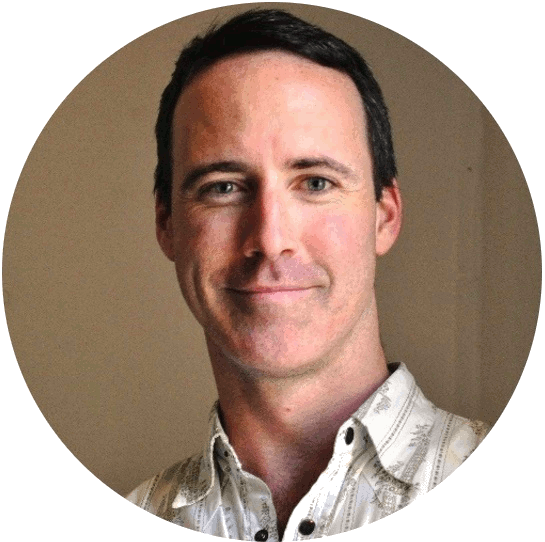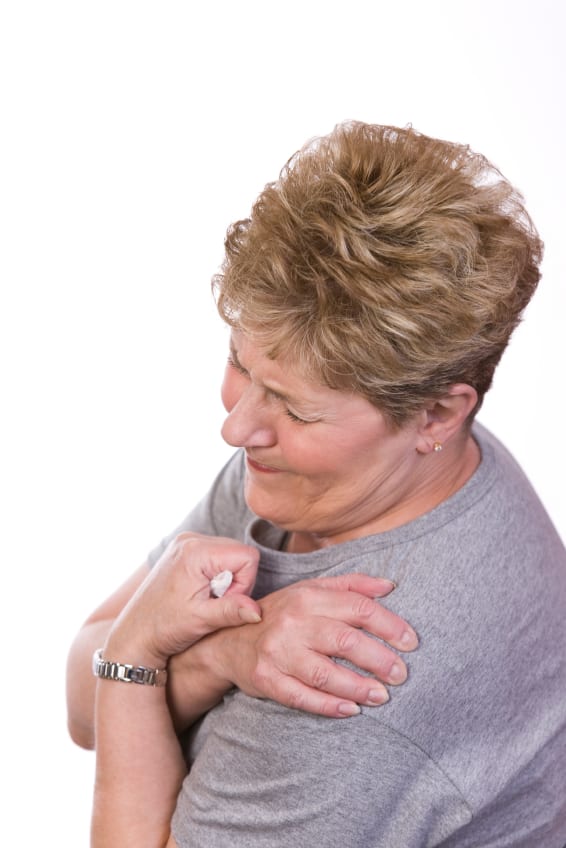The Separation of Medical Science from the Human Heart and Soul is an Illusion
We get weekly questions for reflection in one of my classes at uni. It being a distance course, we are expected to share our responses on a forum for feedback and discussion.
The question this week got me thinking about a general perception held by many: that modern medical doctors are coldly divorced from the emotional experiences of their patients. This is the ‘Heartless Doctor’ trope, the haughty expert who lacks empathy. “It’s all in your head.” Or, the more passive-aggressive, “Take two aspirin and call me in the morning.”
This is kind of weird because another trope exists: the “Guardian Angel” where a doctor – or nurse – shows deep empathy and care for their patients. These Guardian Angles want nothing more than to work tirelessly to save lives. ER dramas on TV play heavily on these tropes.
Here are some of my thoughts. They are based in large part on my experience as a remedial massage therapist and current student of myotherapy.
Question: We start to see the appearance of modern medicine for the first time this week—what do you think were the plusses and minuses of this new way of thinking?
1. Plusses
Demystification
Since the Rennaissance, the highly rational and scientific approach to healing and medicine removed a lot of the superstition, guessing, and mysticism from medicine. As a result, medicine has become increasingly accurate and effective for many physiological diseases; however, medicine struggled with psychological diseases since these were less-easily directly measurable or observable.
Germ Theory
Instead of “miasma” (a guess) being the cause of cholera in London, Germ Theory exposed the real culprits: bacteria. It was somewhat lucky that bacteria could be directly observed under the microscope, or the theory may not have been as readily accepted.
If we take some poetic license, we could say that microscopic pathogens are modern manifestations of “evil spirits” and “demons.” In the end, the effect is the same: Western medical scientists have been able to study, describe, define, and name them, in ways not that dissimilar to how shamans or priests would name the offending demons in order to cast them out. (There is even a similar amount of projectile vomiting involved…!)
Paraphrasing Arthur C. Clarke, modern scientific medicine is, on its face, indistinguishable from magic. Doctors today wield intricate potions and specialised tools, read from giant books, speak cryptic Latin words, and focus unseeable energies to defeat invisible foes.
Antibiotics and vaccines, in particular, have been very effective at preventing many millionsof deaths.
Soap
Soap also made a massive impact on medicine. I recently read about Ignaz Semmelweis, who in 1847 proposed the practice of washing hands with chlorinated lime solutions. He had noticed while working in Vienna General Hospital’s First Obstetrical Clinic that doctors’ wards had three times the mortality of midwives’ wards. Semmelweis noticed that the practice of cadaver study had recently become popular, as professionals embraced the study of anatomy. It then happened that a colleague of Semmelweis died from a small wound infection. Seeing the connection, Semmelweis suggested that the problem was decaying organic matter on peoples’ hands infecting patients. The Doctors initially would not accept that they might be doing harm, believing that unseeable particles of decaying matter could not possibly have any effect on their sick patients.
(Read more here: https://www.history.com/news/hand-washing-disease-infection.)
Semmelweis was not aware of germs yet. It took another few years for Louis Pasteur to come along and several more decades for Koch et al. to develop germ theory. But he had noticed a clear link between contact with dead things and living things getting sick. His persistence saved many lives. When germ theory later connected the dots, soap became all the rage. Rates of wound infection, gangrene, amputations, and death from the likes of lymphangitis dropped significantly. Wound cleaning with alcohol or iodine developed from this applied knowledge. Many millions of lives were saved, and life expectancy increased dramatically.
Sanitation
Sanitation was also a big contributor, especially in Europe’s large cities where the lost art so widely practised by the Romans millennia before was finally reintroduced, carrying away potentially large pools of bacterial breeding grounds. Drinking water being a vector or reservoir for many diseases such as typhoid and dysentery, access to clean drinking water can reduce the burden of disease and death by orders of magnitude.
The Microscope
The microscope was another powerful tool developed by the early scientists of the Rennaisance period. By the 1880s it was used to discover the plasmodium parasite causing malaria (another previously ‘miasmatic’ disease), which allowed a variety of effective treatments to be developed, including DDT spraying for environmental control.
Diagnostics
A template diagnostic process is a part of regular medical practice. Clinicians take a client history, form a hypothesis (or a differential), perform tests to assess the differentials, and finally propose a remedy. Combinations of nuclear science, physics, and chemistry come together with understandings of biology to enable MRI, CT, and w-ray scans, radionuclide injections to check organ functions, and ultrasonic soundwaves can be bounced around to see what is happening at all levels under a patients skin – without having to cut them open.
Nutrition
Finally, nutritional and agricultural science has also made an enormous impact on human health over the last several hundred years. We now produce enough food calories to feed between 10 and 12 billion people. Pesticides and herbicides prevent or control many plant-borne diseases, and along with applied fertilisers, this enables much greater food production volume. International transport networks and greenhouse technology also enable a wide variety in the diet (and thus nutrient availability) at all times of the year.
Public Health
Taxpayer-funded research and public health programs have made medical scientific development much more efficient and cost-effective. Governments are willing to fund pharmaceutical research and public health initiatives because they see the downstream benefits to increasing education and prevention (preventive) care on reducing the cost of primary (reactive) care.
Capsules, Tablets, and Bottles
Standardisation means reliability. Clinical trials of pharmaceutical and psychiatric remedies, under the scrutiny of peer review, have meant that treatments are highly reproducible around the entire world.
Genetic science and Nanotechnology
There is a very real possibility that medical scientists could soon develop tailored preventive and reactive therapies based on patients’ unique genetic and epigenetic expressions.
Some drugs could be delivered with high precision to individual cells in the form of nanoparticles, such as treatments for some cancers. Western medical science holds has come a very long way in a very short period of history, and still shows a lot more promise.
Summary: Lifespans
Not only does less death and longer lifespan reduce human suffering, but it also increases vitality, quality of life, and productivity. More time to accumulate knowledge and wisdom during a long life arguably increases the capacity of human beings to make meaningful contributions to human progress.
2. Minuses
Medical Savagery
Perhaps as a remnant artifact of Greek medical philosophy, many modern Western medicines are powerful, harsh treatments with side effects that sometimes are so harsh that patients actually opt to remain sick or even hasten their path to death. According to Di Stefano, the Greeks used a small number of powerful drugs compared with the Egyptians, who had access to hundreds of drugs and thousands of combinations. I wonder if there is a historical connection here, to the modern Western medical philosophy of “Kill it or Cut it out.” To me, this stands in opposition to the Eastern philosophy of “Find the weakness and strengthen it.” Western medicine tends to “go to war” on diseases, for example, the “war on cancer” instigated by US President Nixon.
Over-prescription
Emotional Disconnection
There seems to me to be general use of science to bludgeon diseases with savage force. The scientific method requires intense objectivity and avoidance of emotional involvement. Consequently, we have experienced a kind of dehumanisation of medicine, with emotionless systems or clinicians unable to treat patients as whole human beings with emotional dimensions to their diseases. The dehumanisation of science is a modern philosophical dilemma.
Economics
I have to talk about economics and wealth disparities. Although economics is a “less-precise science”, it is still a product of Western/European culture, with origins in feudalism and colonialism. Science itself is subject to economic forces because science that cannot be monetised is far less likely to be funded. This monetisation has driven pharmaceutical remedy development. If you can precisely standardise a remedy, put it in a pill, and transport it around the world, it becomes highly valuable in its reliability; however, if you can’t afford it or cannot get to it, it is useless. Similarly, if you cannot afford sanitation, agro-chemicals, or globalised prices for food, then the power of science is of no use whatsoever and lifespans remain short.
Summary: Ethical Dilemmas
There is even some concern about health insurers using genetic science to deny coverage to individuals with specific genetic markers. The ethics of this possibility, and the potential costs to human life, are hot topics of debate. There are further ethical debates about the possibility of being able to ‘design’ a baby.
As with so many branches of modern science, the fact that we are able to do something does not automatically means we should. The contents of Pandora’s Box continue to spill forth.
3. Balancing the equation…?
Economics
Economics and the wealth-gap is becoming more of a talking point. Some jurisdictions and international organisations are becoming more effective at bridging this divide. The cost of many generic medicines is coming down. Sanitation is improving, and food security is a focus of many intergovernmental agencies. Life expectancies in less-developed countries are doggedly improving.
It’s All In Your Head… AND Your Body
Psychological diseases were quite the mystery until the last several decades. Since then, more multi-disciplinary science has been finding links between quantitative measures (e.g. neurotransmitter activity in depression & anxiety; dopamine regulation in executive function disorders) and qualitative research. For much of the 20th century, many behavioural issues were thought to be “all in your head.” Anxious patients might be told “there is nothing wrong with you.” – That is, nothing that medical practitioners could readily see. Now, we are finally beginning to reconnect the dots between what were once spiritual or mental diseases and their relationship to the structure and function of the human body-mind complex. We are also drawing links between some psychiatric conditions and the social or physical environment.
While psychology and psychiatry are still less-precise sciences, sometimes derided by “hard” scientists. Yet in many countries, Western medicine has begun to integrate some flexibility when it comes to psychological and psychiatric disease. This flexibility in preference to rigid precision makes more room for the complexities of the mind and emotions.
Bridging The Gaps; Connecting The Dots
I am also observing at Endeavour (where I study), and amongst complementary health clinicians, and elsewhere in medical circles, the intentional combination of scientific processes and thinking combined with and mediated by a holistic approach to treating the whole person and not just their disease. There is still a place for spirituality, ritual, and emotional experience in even the most simple of treatments. Positive Psychology, a modern branch of the discipline, teaches us that practising gratitude has beneficial physiological effects such as a decrease is the subjective experience of pain. Linking this even with something as simple as taking aspirin often has surprising effects.
Conclusions
My final thought is an extension of this movement towards a ‘third way,’ and comes in part from my direct observations. While volunteering at PeterMac cancer hospital some years ago, I constantly noticed how empathetic and caring every single member of clinical staff was towards the patients. It was striking. I learned that from the Board of Directors down, it was a cultural value to see the patient as a whole person with a breadth of personal experience. The hospital actively supported the cultural needs and religious practices of patients.
So my thought is this: we must not be too quick to pre-judge modern practitioners of medicine as being emotionless or willfully ignorant. Some are, yes, but likewise, some practitioners of complementary medicine, too, are also just “going through the motions” with their clients and patients. What it comes down to is the attitude of the individual clinician, or the culture of their workplace, no matter where they are of what their modality is.
Even the most hardcore and objective scientist is still a human being with a heart and as soul. We should keep that in mind as we read the results of their labour.
To believe that human science and human soul are somehow mutually exclusive is a delusion.


